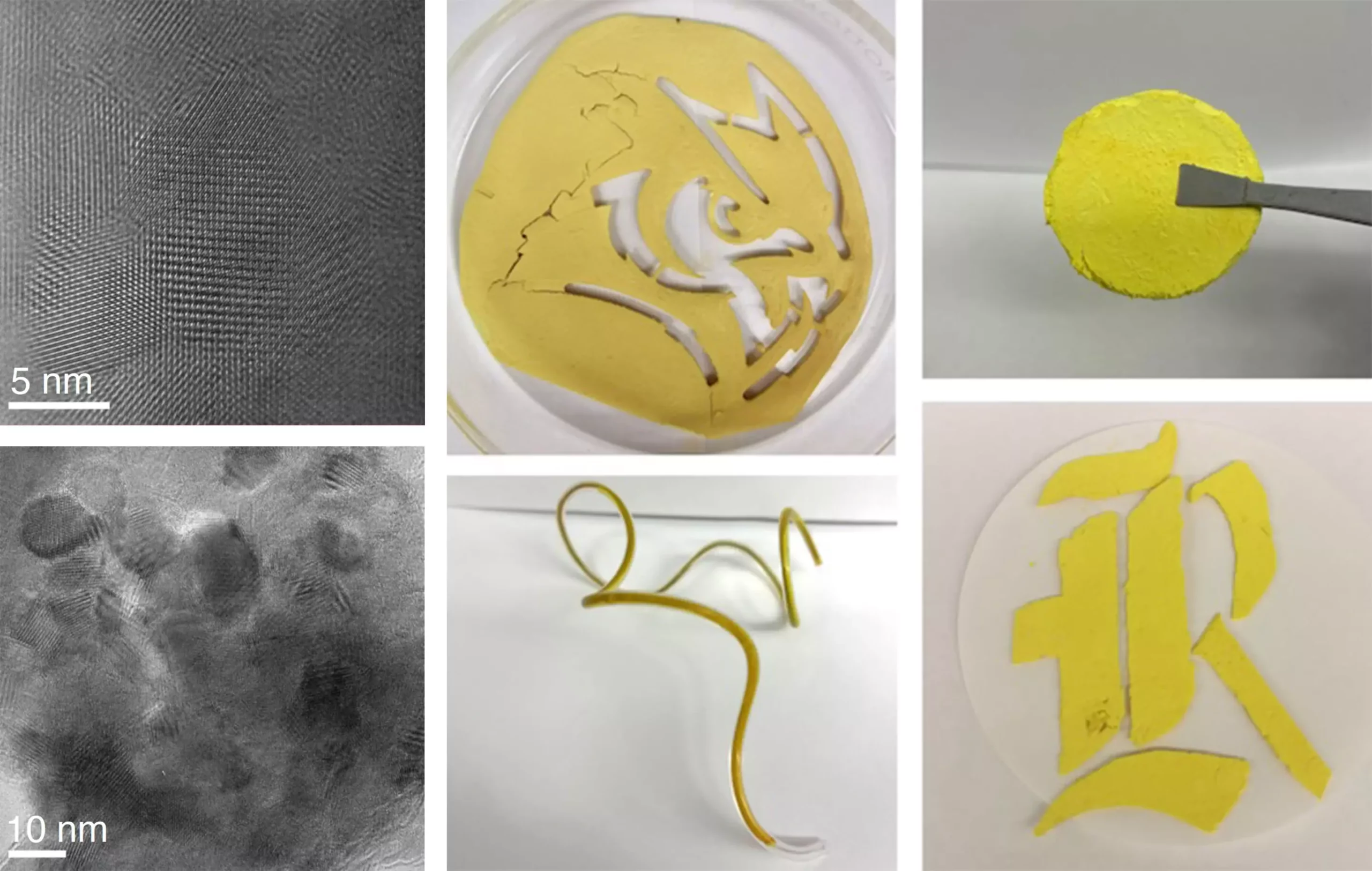Covalent organic frameworks (COFs) are emerging as transformative materials in the realm of environmental science and technology. Their intricate molecular composition allows them to function as highly effective tools for gas trapping, water filtration, and catalyzing chemical reactions. With pressing environmental challenges related to pollution and energy storage, the potential applications of COFs could reshape the landscape of sustainable practices. Recent advancements from Rice University highlight the significance of COFs in tackling the pervasive problem of “forever chemicals”—a category of pollutants known scientifically as per- and polyfluoroalkyl substances (PFAS).
Led by chemical engineer Rafael Verduzco, the research team at Rice University has introduced a pioneering method to synthesize COFs that promises both cost-effectiveness and high throughput. In a study published in ACS Applied Materials and Interfaces, which will be prominently featured on the journal’s front cover, the team’s method is revealed as a low-cost alternative that can generate high-quality COFs efficiently. The highlights of their approach involve a multiflow microreactor system that permits continuous synthesis rather than batch processing. Safiya Khalil, the study’s first author, likens this innovation to a “minifactory on a lab bench,” which combines ingredients in a steady flow, optimizing the synthesis process.
Traditional methods of producing COFs are often fraught with challenges such as high operation costs and extensive processing times, hindering their broader application. The continuous flow technique developed by the Rice team not only mitigates these issues but also enhances the properties of the COFs produced.
Among the remarkable findings of the research is the demonstration that COFs synthesized using this new method exhibit enhanced degradation capabilities for PFOA, a notorious PFAS compound. PFOA is linked to numerous health hazards, including various cancers and reproductive issues. The ability of the new COFs to effectively break down these harmful substances marks a significant step in the quest for innovative methods of contaminant removal. Verduzco asserts that these findings support the hypothesis that COFs could play a pivotal role in developing cleaner technologies aimed at environmental decontamination.
The process for breaking down these extreme pollutants, termed photocatalytic degradation, harnesses light, and operates effectively at ambient temperatures. Khalil creatively describes COFs as “powerful sponges with built-in ‘sunlight engines,’” emphasizing their potential to outperform existing decontamination technologies.
COFs are characterized by their unique crystalline structure, which is formed by connecting small, repeating units into porous, sponge-like frameworks. This structure gives them an extensive surface area that can be tailored for various applications. The new synthesis method allows researchers to explore a broader array of desired characteristics and macroscopic formats, facilitating further innovations in fields such as semiconductors, sensors, and drug delivery systems.
In contrast to traditional COF production that exhibits limitations due to toxic organic solvents, high pressure, and elevated temperatures, the Rice team’s strategy not only streamlines the synthetic process but also yields COFs with superior crystallinity. This enhanced structural quality can lead to improved performance in their intended applications.
The implications of this groundbreaking research stretch beyond the laboratory. By enabling the large-scale production of COFs, Verduzco and his team are laying the groundwork for advancements that could significantly mobilize innovation in environmental technologies. Khalil expresses the hope that this streamlined synthesis method will catalyze the exploration of new COF formulations, ultimately driving the field forward.
As climate change and environmental degradation continue to present unprecedented challenges, the integration of such advanced materials into practical applications could play a crucial role in mitigating their impacts. The possibilities are vast, ranging from more effective water treatment solutions to enhanced energy storage systems.
Overall, the progress from Rice University presents a compelling case for the future of covalent organic frameworks in environmental chemistry. With an innovative synthesis methodology that emphasizes efficiency and performance, COFs are poised to become essential players in the field of green technology. Their capacity to break down harmful chemicals and adapt to various applications suggests a promising horizon in chemical engineering and environmental remediation. By transforming how these materials are synthesized and optimized, researchers are paving the way for a cleaner, healthier planet, one framework at a time.


Leave a Reply